museum of paper culture
viphob manopanjasiri architectural thesis handbook
architectural thesis handbook ; museum of paper culture viphob manopanjasiri
01 architectural thesis I /cumulation of things 02 architectural thesis II /from words+meaning to design approach 03 architectural
design
/architectural design + architectural atmosphere
abstract
Amidst the rapid digitalization in our contemporary society and the world, paper tend to lose its significance in the world. Yet, paper is therefore not a simple white sheet of void or nothingness, but it predominantly behaves as material that fulfills itself with senses of touch and tactility that fosters creativity and the evolution of mankind. With the creation of paper allows the emergence of arts and cultures in Thailand such as the culture of note taking and prints that prospers thewisdom of the time, from the culture of wrapping and enveloping things to the cultivation of hands which embellishes into handicrafts of festivities and traditions. Therefore, paper is acreative material that contributes to the culture of mankind and the worldview.
"Paper is therefore not a simple white sheet of void or nothingness, but we use it as a world onto which we unleash thoughts and imagination, record knowledge and hide secrets, define love and express grief, reveal life and conceal self, etc. A multitude of human stories have been endlesslyrelayed and transferred. In this sense, paper is fascinating — as fascinating as magic."
exerted from initials from Bangkok Book Festival 2021 within the theme "Magic of Paper"
The Museum of Paper Culture aims to gather, preserve and exhibit the significance of the prosperity culture through the materiality of paper which contributes to the dimension of arts and culture in Thailand, reflected through the diverse dimension in the concurrence of the heritage and the folk arts, beliefs, handfuls of traditions and festivals and the identity of Thailand. Furthermore, The Museum of Paper Culture opens up to become an inclusively true creative public space for the city that eagerly fosters urban creative activities and events, including recreation and tourism.
The site area is 5 rai 1 ngarn 10 sq.wah, located in Maitrichit Road, Pom Prap Sattru Phai that is filled with the cultural heritage asset, both tangible and intangible, of the place and district. The site is located in the old charming districts and streets of Nana District which will soon become a new creative district regarding the transfiguration of Hua-Lamphong Station that will soon be developed as a new center of the arts and culture for the people in the city.
1 paper as material that reveals senses of touch - physicality of life
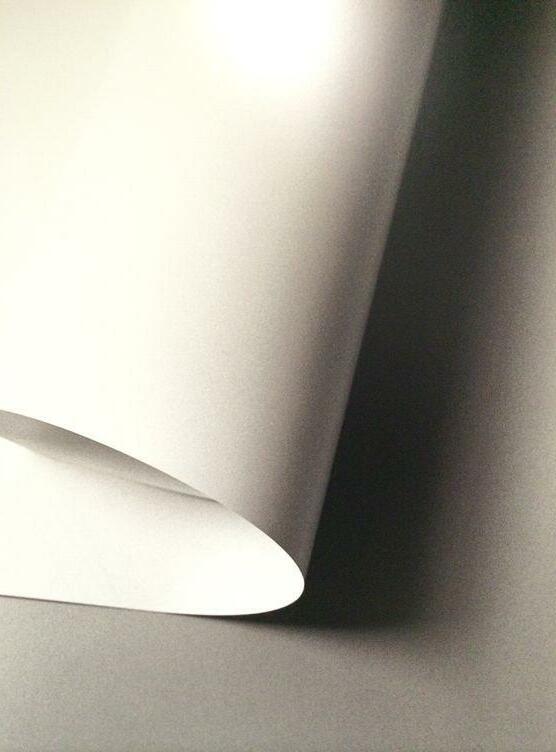
paper has feeling
prints knowledge
from birth to death
does paper love ink?
religion printmaking a tactile quality im print emboss paper
PAPER IS A MEMORY KEEPER
a diary a sense of touch
threshold key understanding handmade
image writing
reminiscence
texture hands
evidential memory documents paper
imprinted traditions knowledge
stories
sense of place care
sense of touch art memory keeper love
traditions etiquette layers tactile notes samut - thai typesetting
beauty delicacy small details craft
thesis handbook ; museum of paper culture
nature
ambiguity origami
perfection
fragility
artisan
simplicity genius loci goodness emotions
01 architectural thesis I /cumulation of things
The work of architectural thesis I starts from architectural issues that the students of the faculty would really look forward into searching, reserching, discovering and looking into the pieces of information that are crucial into developing the architectural thesis as solutions or embellishments to these architectural issues in the architecture. The students start from looking deep into one's soul, minds and bodies, into interrogating the main issues that have been the sparks of the students' interests, wheter it be arts and crafts, social values, political or even sustainable issues of the physical worldview that spark architectural issues that at the end of the day would create a meaningful and prosperous physicality of forms.
After searching the issues of the students' own, they would later on interrogate the possibilities of the issues into creating a significant yet vital architectural programs that ultimately tackle these issues, then later on into finding the site of the program that truly captures the identity of the program and cherishes the spirit of the place. The Museum of Paper Culture initiated from one's opening ceremony of the semester and the creator forgot to buy stationeries and paper noteboko. Then, within each paper notebook reminisces into the love of paper, a touch of tactile experiences that create an ambiguous yet artistic interpretations between mass industrialization or craftsmanship, object or material, art or thing.
architectural thesis handbook ; museum of paper culture
1 2 from sketches and collection of notebooks paper is all around you (through the eyes)

architectural thesis handbook ; museum of paper culture viphob manopanjasiri


The Museum of Paper Culture initiated from the love of oneself into hand-sketching and collection of paper notebooks. It is perspicuously seen that the love of these two activities persist not from the any other elements of notebook, or writing materials, but predominantly from the existence of paper. The texture when writing materials are superimposed into a plain sheet of paper. Some is soft. Some is rough. These senses of touch create a tactile and meaningful experiences in the physical world of life. It is the art of the existence of paper that intertwined the people into creating the culture of paper.


"from the passion of things to the thing itself "
paper handicrafts and festivities - the gatherings of people
paper wrappings and packagings - the enveloping of things
paper prints and books - the publishing of knowledge
paper arts and creative paper - the aesthetics of creativity
paper treasure - the note - taking culture paper structures and architecture - the spatial dimension

From the materiality that persists senses of touch and tactile experience, paper has been one of the main materials in creating arts and cultural dimension of life
Thus, it's inevitably intriguing where a plain sheet can be constituted into planes of thinness, creating precious spatial and structural culture of people

On Creative Placemaking


"Creative Placemaking" is generally understood as the use of creative arts and culture by diverse partners to strategically define the physical and the social character of a place and improve the physicality of the district and the city ultimately

1 museum - a place that not only act as a house of arts and culture, but also a house of the public
Museum as Civic Space,

"not only does museum preserves cultural object, but also a creative civic space for the public"
1 2 the urban worldview of the site the spirit of the district - the city's memories
architectural thesis handbook ; museum of paper culture viphob manopanjasiri

"on the being of site paper + people + place "



Finding Mr. Site for Paper Culture is as creative as it could be
In locating the site, the creative placemaking takes form into creating significant ideologies of urban public space that accounts for the significance of paper culture. Creative Districts in Thailand commenced from Charoenkrung, a prototypical district that emerged from multiculture and cultural diversity. Yet, Charoenkrung is fully developed and urbanized into certain degrees. Meanwhile, Hua Lam Phong District, circumsbring the Nana - Yaowarat District, is soon to become a new creative hub of arts and culture in the city, intertwined with the existence of Paper Community in Charoenchai District.


In the upcoming 2022, Hua Lam Phong Station will be reimagined into becoming a new creative hub for arts and culture, and mixed - use of urban uses and activities. The District is fulfilled with creative and visionary prospects into developing the area full of architectural heritage, regarding the Nana - Yaowarat District, a charming heritage of buildings and shophouses, and Khlong Padung Krung Kasem Canal that will artisticly be revitalized into the people's canalside public space, full of lively urban activities such as flee market, an artistic performance and creative events that will flourish and fulfill the life of the spaces.


design

"from the center of mass transportation into a new creative hub of arts and culture for the people "
1 the genius loci ; the spirit of place ; nana - yaowarat
architectural thesis handbook ; museum of paper culture viphob manopanjasiri

Not only the physicality of the site, the spatial and structural ideologies of the spaces in the district, it is also vital that intangible heritage of cultural values of the spaces is to be recognized
From Nana - Yaowarat, regarding Yaowarat and the Prom Prap District, the genius loci or so called the spirit of place is "Cute - Thai - Chinese / Multicultural Spirituality"

1 the genius loci ; the spirit of place ; the charming buildings of the district

architectural thesis handbook ; museum of paper culture viphob manopanjasiri





Not only the charms of the old district of Pom Prap District that capture the memories of the city and the people, it is inevitably seen that aged buildings that have been around for such times is the key into the understanding the heart of the place, the district and the city. The aged building that have been used over and over the times is an architectural heritage of the place.

Not only Nana - Yaowarat is fulfilled with dearest old buildings, but the site also consist of aged buildings that are meaningfully related with paper culture. The site is filled with shophouses of spiritual paper shop that is related with the shrine opposite. Furthermore, the district accounts for the typology of resting spaces based on resting space in transition with the train station.

"Cities need old buildings so badly it is probably impossible for vigorous streets and districts to grow without them."1 paper as material that reveals senses of touch - physicality of life Jane Jacobs, 1961, The Death and Life of Great American Cities.
Within the process of architectural thesis, the project seek to not demolish the significant buildings that is intertwined with paper culture, but seek to revitalize the spirit of each building through Architectural Conservation Process - Adaptive Reuse that preserve the character of the buildings in order to spare and preserve the identity of the place, regarding three main buildings.
/Thai Wattanapanich Printing House

/Sahai Sahakij Hotel
/Bae Jek Luk Heung ; Spiritual Paper Shop
1"It is Thaiwattanapanich Printing House that is filled with memories of paper and ink, the paper culture at the times."

architectural thesis II
/from words and meanings to architectural design
In architectural thesis II , from the research given and extracted from architectural thesis I , the students are able to accumulate certain data and information, physicality of the site and place , and also the tangibility of the program that accounts for the totality of the architectural thesis II. The students will now start to develop certain words and meanings, that will soon lead to the realization of the physicality of spaces, form and architectural characters of the spaces in order to existentially turn a site into a place. Furthermore, the students will start developing preliminary sketches and drawings in order to visualize the actirivites and the relationship between activities in to the physical form of architecture
The Museum of Paper Culture starts from analysis of site and program, into developing a set of words and terms that is connected with the archtiecture of the museum of paper culture. The student start from scratching the morphology or the urban fabric, the site mobility, activities and spirituality. From then, the student start to extract certain words and meanings, including related terms of written language of meanngs into developing certain ideas. Moreover, it is evidently crucial that distinctive physical characters are now introduced into creating an inclusive creative public space for the peopl of the city. and how can architecture play a role physically?
architectural thesis handbook ; museum of paper culture
1 2 the urban fabric of the site - closed yet not open the three dimensional morphological quality of the site
architectural thesis handbook ; museum of paper culture viphob manopanjasiri
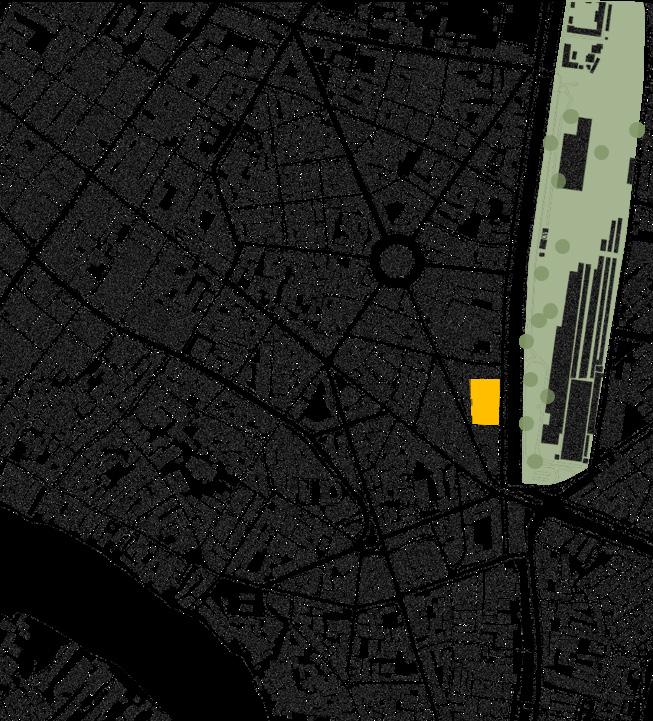
The realization of concept and ideas from paper to architecture

The heart of the Museum of Paper Culture is not only a plain sheet of paper, but a relationship between paper and people. Therefore, from the analysis of the urban fabric of the site, it is seen conspicuously of urban density and the small unit of urban blocks in condition with the old district uses. Yet, there seems to be no open spaces for the district. Hence, the main heart of the project is to give "openness" of space (open space) back to the people of the city, to make the spaces of the museum act as a plain sheet of paper that can creatively be fulfilled with urban activities of the city
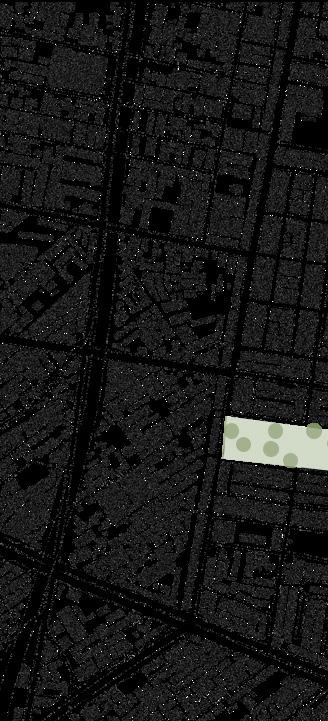
"what if paper is a creative void / openness (of spaces!) "
The conceptual idea started from giving back open public space into the city, and integrating the times between the old and the new values of the program and the site to creative placemaking. The design then starts with putting an enough mass of program along the site. Yet, no open spaces and transitory spaces between the two streets are found. The design then break the masses into three masses, leaving a whole some of open space in the center of the building, cascading the architectural form to let open spaces flow vertically. Ultimately, characters of open spaces are defined
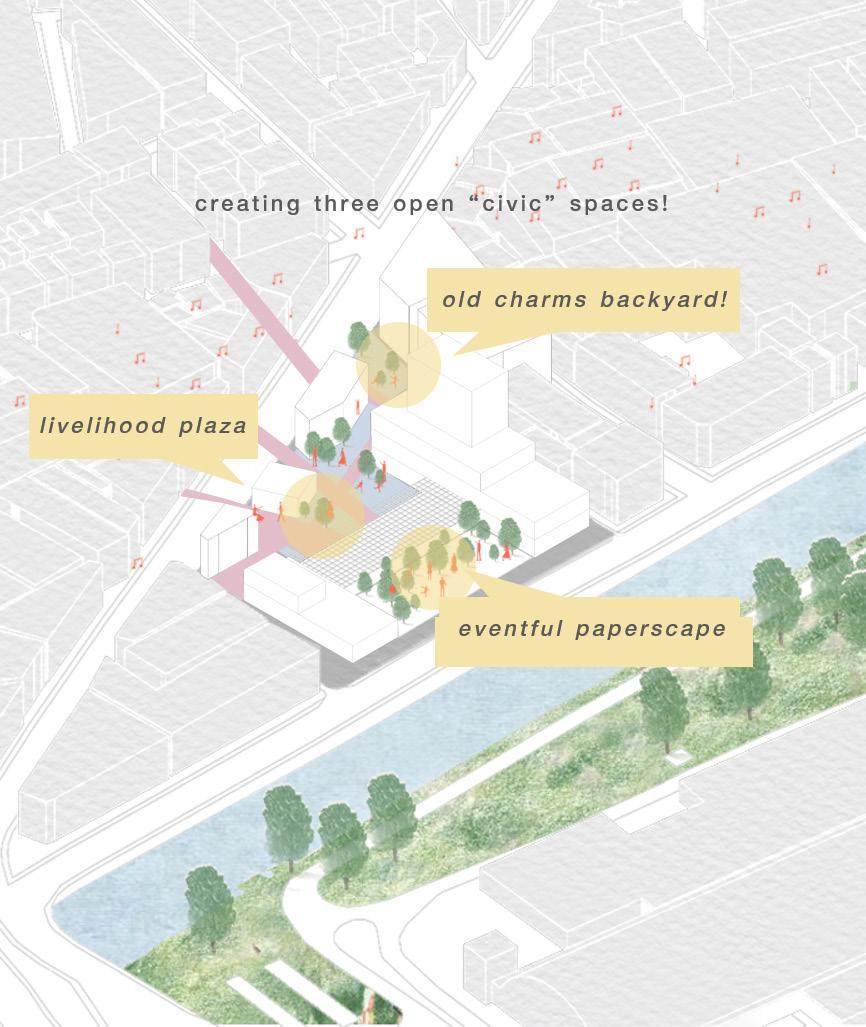
1 2 integrative transparency - to integrate activities and culture of the place and the people to characterize each open space into handfuls of varying creative events

"integrative activities museum as urban platform of the city"
The Design Development of the Conceptual Architecrtural Ideas
1 the design development - creating a plain sheet of space!



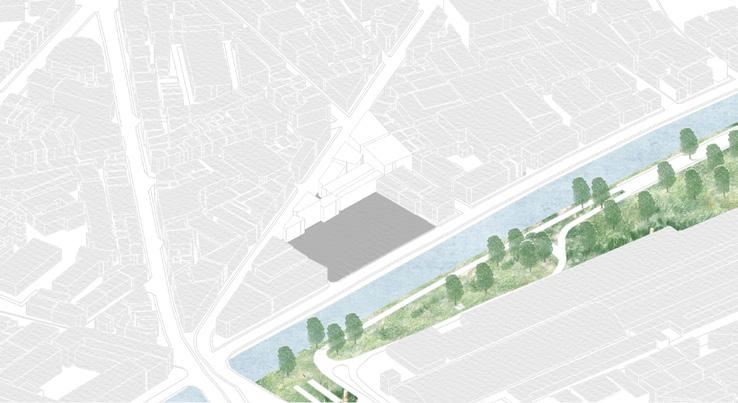






architectural thesis handbook ; museum of paper culture viphob manopanjasiri
03 architectural design
/architectural design + architectural atmosphere
The architectural design initiated from the existence of words and meanings mentioned. Fromthe scratches of ideas of things , the museum of paper culture takes part into developing the idea full of wonders where the museum could not only provide but give life to the people in the city. With the analysis of the morphology, the area seems to be lacking an open space that can act as space for recreation and the gatherings of people . Another factor contributing to the developing of ideas and schematas is that the materiality of paper and the quality of space that tend to be blended into one . The design take uses of disciplinary subtility of translucency and transparency, of lightness and lights that the architectural space can give to
certain atmosphere, whether it be space, form or character. Moreover, the museum of paper stands firm between the two open streets of the city, one old and one new. The strategty introduces such architectural solutions for the museum to become inaugurated within the old and the new context. Not only the district, but the aged building that serve as the spirit of the place in tangible asset of the architectural heritage of the district, the city and the country.. It is the intangible cultural asset that these buildings that are related with paper culture be conserved under adaptive reuse, and superimpose new functionality , architectural space, form, elements and character that reveals the genius loci , the spirit of the place
architectural thesis handbook ; museum of paper culture







 architectural thesis handbook ; museum of paper culture viphob manopanjasiri
architectural thesis handbook ; museum of paper culture viphob manopanjasiri
1 1 entering from the canalside sensing the arrival! - maitrichitr street






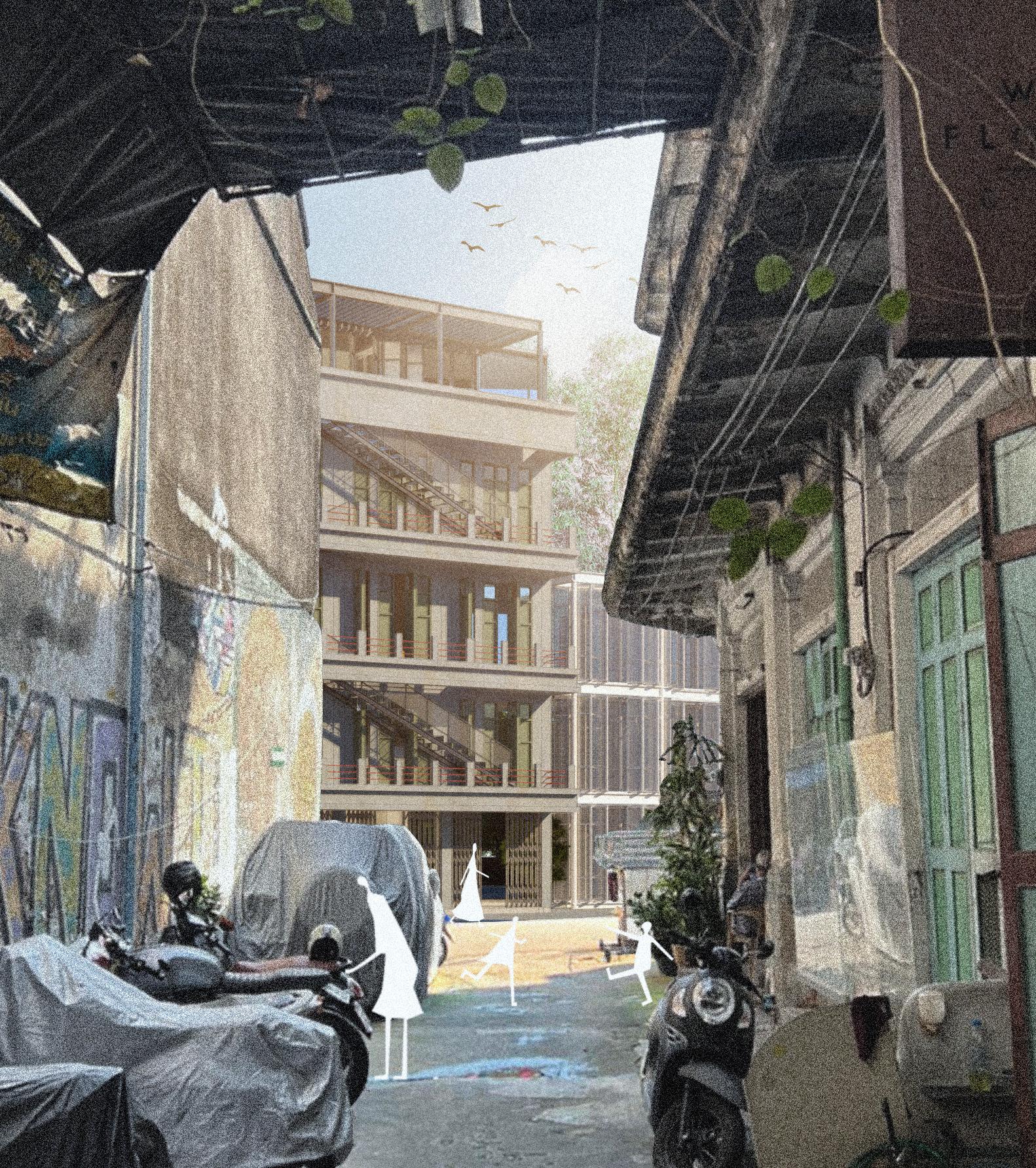
From Krungkasem (the new) and Maitrichit (the old) street entrance, the users will experience "the folding paperscape" that rises up with subtility as the main common space into gathering with people. The design take usage of light and transparent structure that enact both as outdoor exhibition of cultural paper of the district according to the time of the year that also act as shade, creating a light and pleasant atmosphere.
the terrace (charn) that predominantly act as the main gathering place for the people the concept take usage of folding the paper into the paperscape of open space





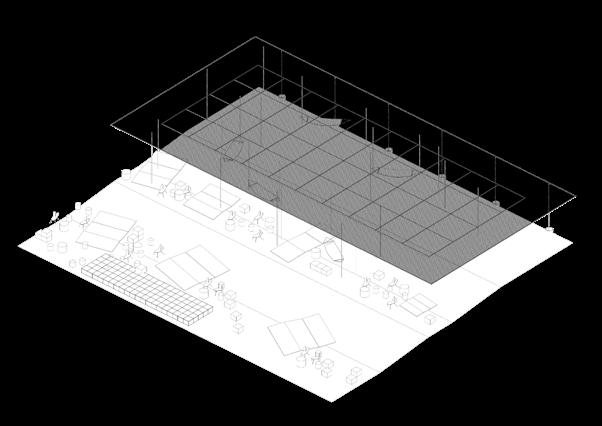



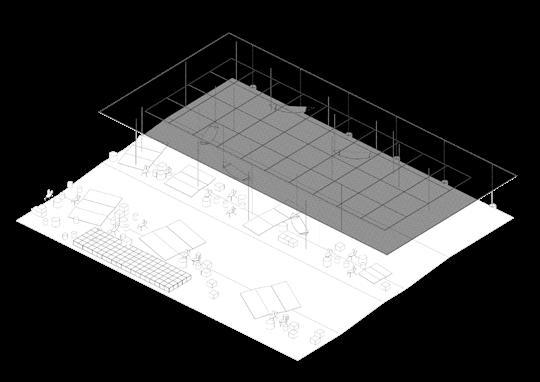







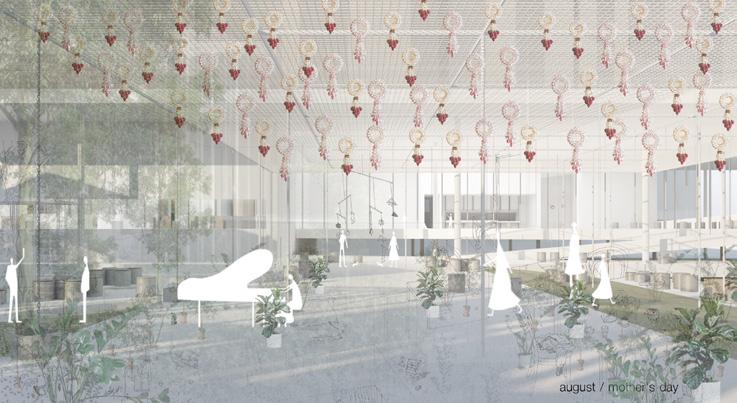

1 the masterplan - the lightness and lights of space
From the main terrace, the people will enter the museum by the right wing of the building, meeting a light foyer of the museum that act as "ใต้้ถุุน" (a space under a thai house) that is airy and light.
Then, when the people pass the museum foyer, they will experience a light mezzanine of lovely potted-plants with the Hua Lamphong Train Station view, between the main folded plaza of the museum


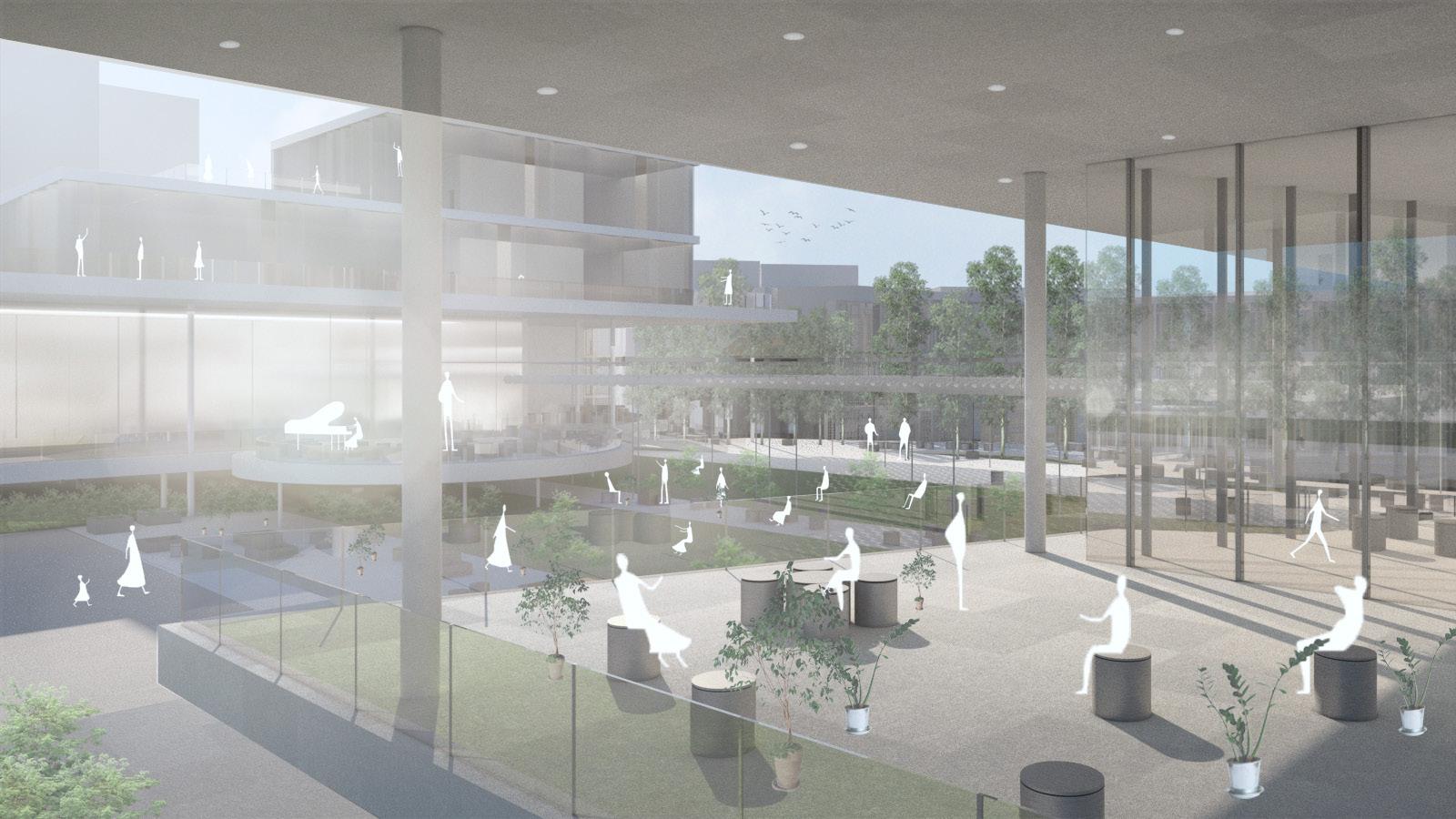
1 2 from sketches and collection of notebooks paper is all around you (through the e
architectural thesis handbook ; museum of paper culture viphob manopanjasiri

Once the people experience the mezzanine of the museum, the people will enter the museum hall, that is designed to captivate the moment of the spatiality, where the volume is elegantly augmented to create a phenomenological aspect of percieving the space of the hall.

From the right side of the hall, the museum holds the ticketing and locker area that is designed to sleekly be used as a plain space of interest, captivating the people with lowering floor space, the materiality of translucency and light materials to lightly occupy the space.

Within the design of translating words and meaning into architectural language, the uses of papery atmosphere are introduced into designing the spatial configuration of the space and architectural qualities of the museum in the exhibition space of the museum.
1 2 from paper to papery architecture the storyline - what is your paper?



It is intriguing where the paper culture is connected with certain acts of the hands that touch the paper, for example, the touchings and the foldings. Hence, the design of the exhibition space takes the spatiality of light boxes floating in the air. Yet, a folded surface is to be introduced into creating the linkage between the boxes. The surface will also act both as transition space and circulation.
1 1 paper as material that reveals senses of touch - physicality of life paper as material that reveals senses of touch - physicality of life



"paper as life paper as plain sheet"
The first exhibition space to be experienced is called the "paper as life", as the introductory space. Filled with natural sky-lighting, the clear elliptical space act as collages of life paper and screen shows of introdution.


Entering the second room to be called "paper as plain sheet", the space is designed to be a light papermaking pavilion. The space is voided with natural trees and balcony, alongside with artistic materials that originated paper sheet.


as festivals paper as knowledge"
1 paper as knowledge - where the old and the new is intertwined
To let people activate the festivals of paper, the space is designed to gather and circumscribe people into a double volume of floating and suspending pieces of paper that is filled with people


The room of knowledge is a space of Thaiwattanapanich Printing House on adaptive reuse. The design keep the old structures from ground contrasting light cables of new exhibition.

"paper



"paper as art paper as treasure"
The Paper as Art space is to be designed as a hall of contemporary planes of translucent yet new materials that envelope the hall. People will be able to contemplate art from any point of views.

Where paper is deeply and highly cherished in the form of note taking culture, the space is defined lightly with the power of lighting, focus and elegantly spotted to the value of paper
1 2 paper as art - where paper as object ends, and the materiality begins paper as future - what is the future of paper
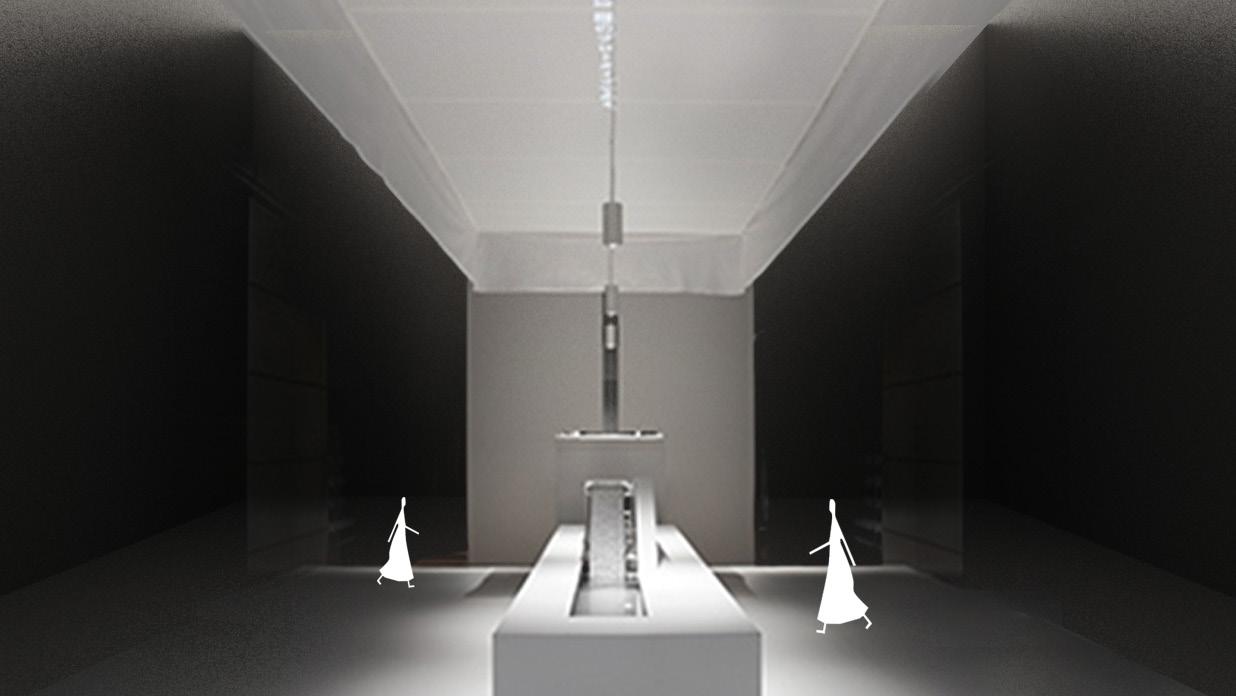
"paper
"paper culture as physicality of life"

1 the overall exhibition - what is your paper?
architectural thesis handbook ; museum of paper culture viphob manopanjasiri








culture as a tactile work (of art) of things"
not only the paper act as material of life, its existence is the key to the cultivation of the people and the creation of the life of the people and place




architectural thesis handbook ; museum of paper culture

the landscape of paper (culture) where paper is born from nature


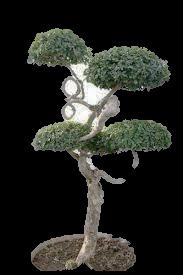
Not only the cultural values of paper is interpreted through the design, the uses and the configuration of the exhibition space inside the museum, the knowledge of paper culture is extended beyond that. By going out the doors of the exhibition space, the people will experience
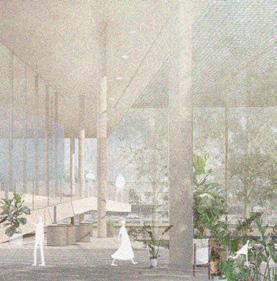

the origin of paper where paper is born, outside the building, in the form of landscape. The Museum take uses of papermaking trees and vegetation in order to capture the essence of the relationship between paper, people and place, and also sustainably originate and devleop paper in the museum.





Not only the role of the Museum of Paper Culture is to house the conservation of arts and cultural paper, The Museum of Paper Culture is also the house of the site, the way in which placemaking is the key to revitalize the district. The design decided on conserving three main aged buildings in the plot and creatively uses urban and architectural solutions into keeping the old spirit of the place (the genius loci) which account for the totality, the physicality, the ideology and typology, encapsulating the contemporary worldview into the architectural design in different ways yet creating a significant buildings that charm the street!

"adapting the aged adaptive reuses are filled with creative uses!"Architectural Conservation through Adaptive Reuse of the buildings

"haiwattanapanich printing house"
One main building in the plot is the Thaiwattanapanich Printing House that will soon become a new creative community for the aesthetics of paper and prints community, yet also the main



exhibition for paper as knowledge. The design conserves the facade of the printing house (facade retention) and superimpose the new space and structure to create a meaningful yet contemporary space.


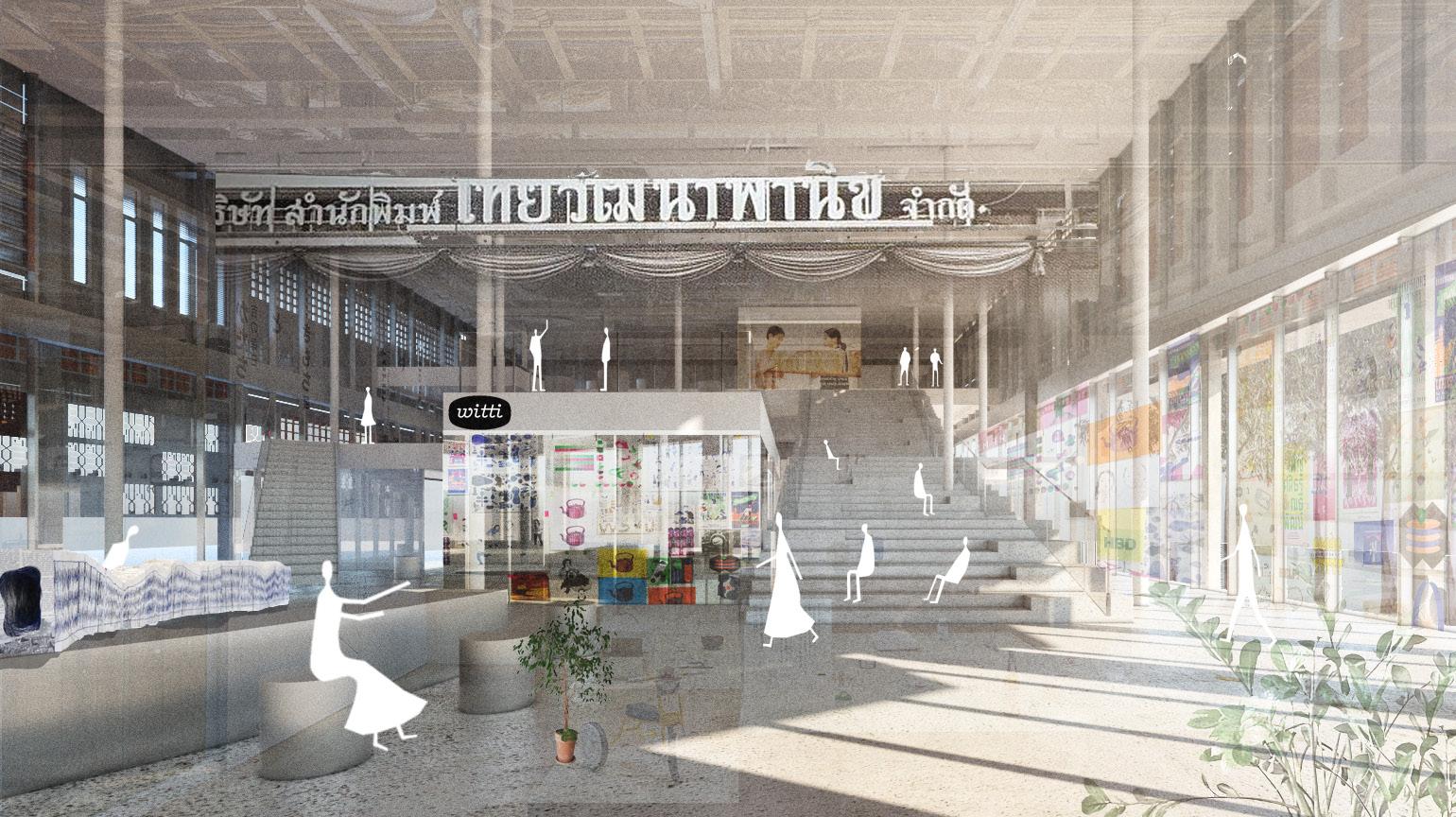

"from street balcony to social balcony"
The second aged building is a hotel for strollers called "Sahaisahakij Hotel". The main intriguing character of the aged is the balcony that is extended along the old street Maitrichitr


The Design then seek to revitalize these balconies to be filled by the people, layering a new folding elements such as stairs to connect each floors and let people become the eyes of the street


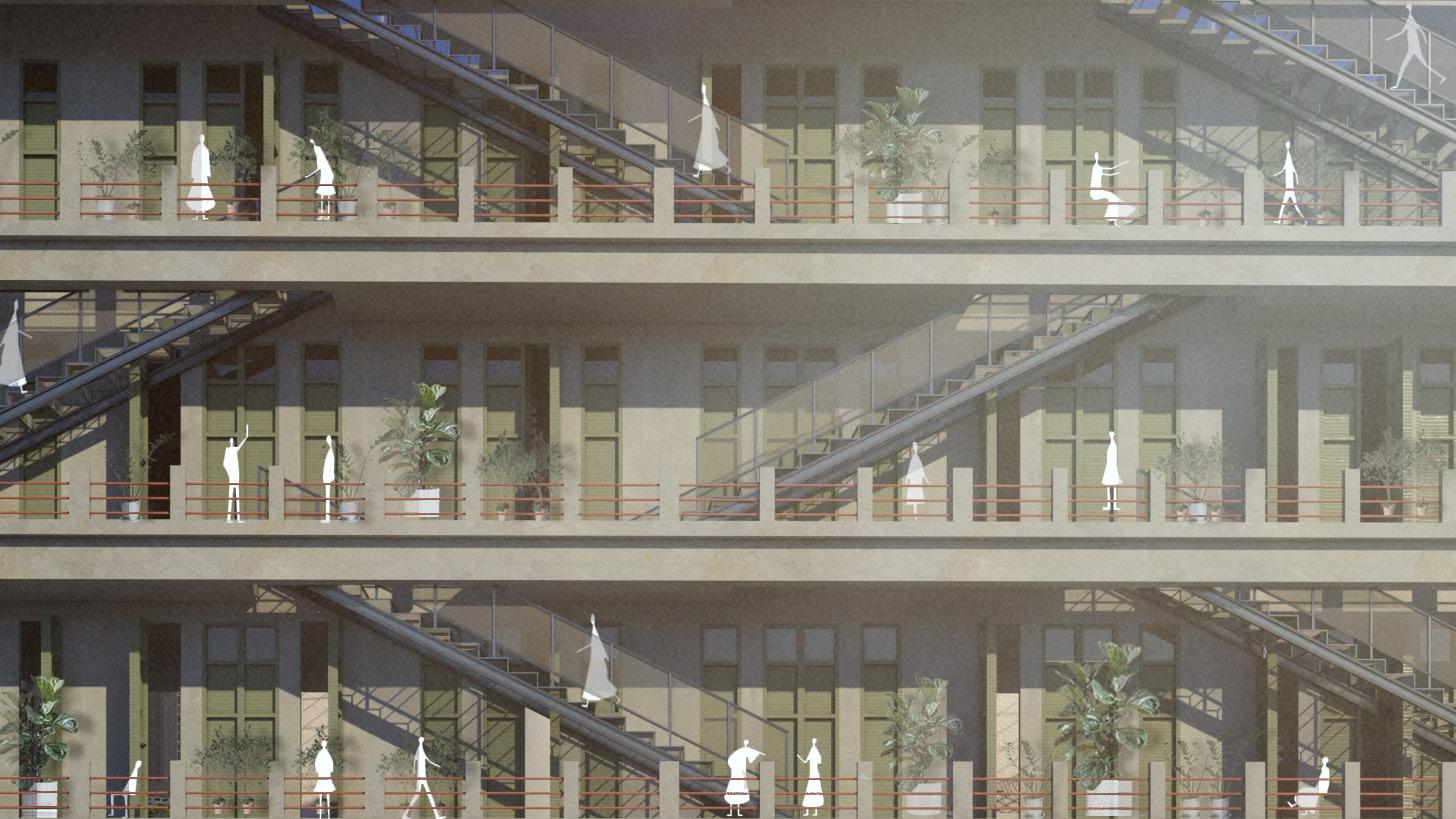

///making space! creating art / collaging paper!
terrace + balcony + pot plants + smoking pot
foldable partition

///relaxing space! microwaving things + small eatery
sleeping+relaxing
The building is to be undergoing the adaptive reuse from the hotel of strollers to become a creative art and artist in residence, a creative rooftop bar. The design then try to conserve architectural elements such as columns, beams, the charming green doors and the living rooms.



Hence, in every space of the aged building, the space is not only filled with people and small nature (potted plants). the building take uses of creative activities to become an artistic workstation for the artist to brainstorm and gather around, even in the interior living unit!
1 paper as material that reveals senses of touch - physicality of life


One new building situated along the Maitrichitr street is to be settled along the Sahaisahakij Hotel. In order to captivate the old, yet the charming essence of the site, the design take the uses of




the old architectural elements, which is the folding doors of thaichinese old district and reinterpret the doors to become a new paper wrappings as the facade of the space of the new museum cafe.
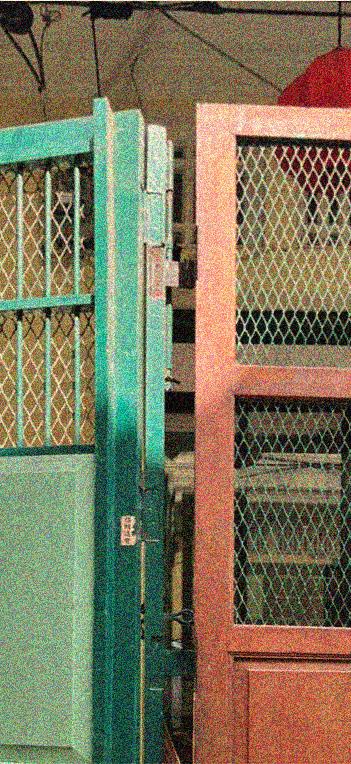


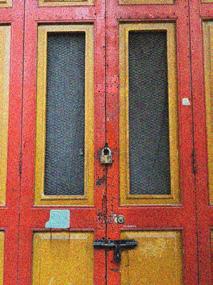
1 the museum cafe - reinterpreting the architectural elements (the oldness)

"rethinking the old, with the new!"
The exteriority and the interiority of the space is designed to create an ambuguity of space. The main facade, paperly wrapped into a three - storey shophouse Yet, when the space is opened, the interiority is exploded into a onestorey hall full of layers of mezzanine space full of nature and lightness


The materiality of the design take advantageous uses of perforated metal panels that capsulates the character of translucency of paper, creating a contemporary character of the architecture in order for the new to be impinged with the old, creating a new facade of the street that is to its times.
1 2 sketches of ideas - impinging the old and the new exteriority and interiority - ambiguity
architectural



the presence of times where cultural paper is being used to fulfill dreams and hopes
Bae - JekLuk - Heung is a cultural paper shop dedicating the presence of the shop to the Chinese shrine opposite to the site. The building is a twostorey building with a

charming architectural elements. The design seeks to conserve every architectural elements to capture the old essence of the aged building, layering new program of a creative paper shop



"experimenting the past" of cultural paper"


"collaging the paper, collaging the district, collaging the city" place. The design seek the potential of these elements, then try to "collage" the elements into a new structures of the street facade, into creating a screen of the pocket urban green space for the people


Within the process of demolishing the aged building of the past, the character of the architectural elements regarding the buildings seem to be very intriguing and show the past of the





1 elevation and section that capture life of the people and place


architectural thesis handbook ; museum of paper culture viphob manopanjasiri

The design not only envisages the old and the new identity of the district, but also signifies the being of the museum that will soon act as the open space for the people of the city. Then , open
spaces in the middle take the difference of the architectural levels for the strollers to connect each spaces through the main open space with the main buildings along the left and the right wing.



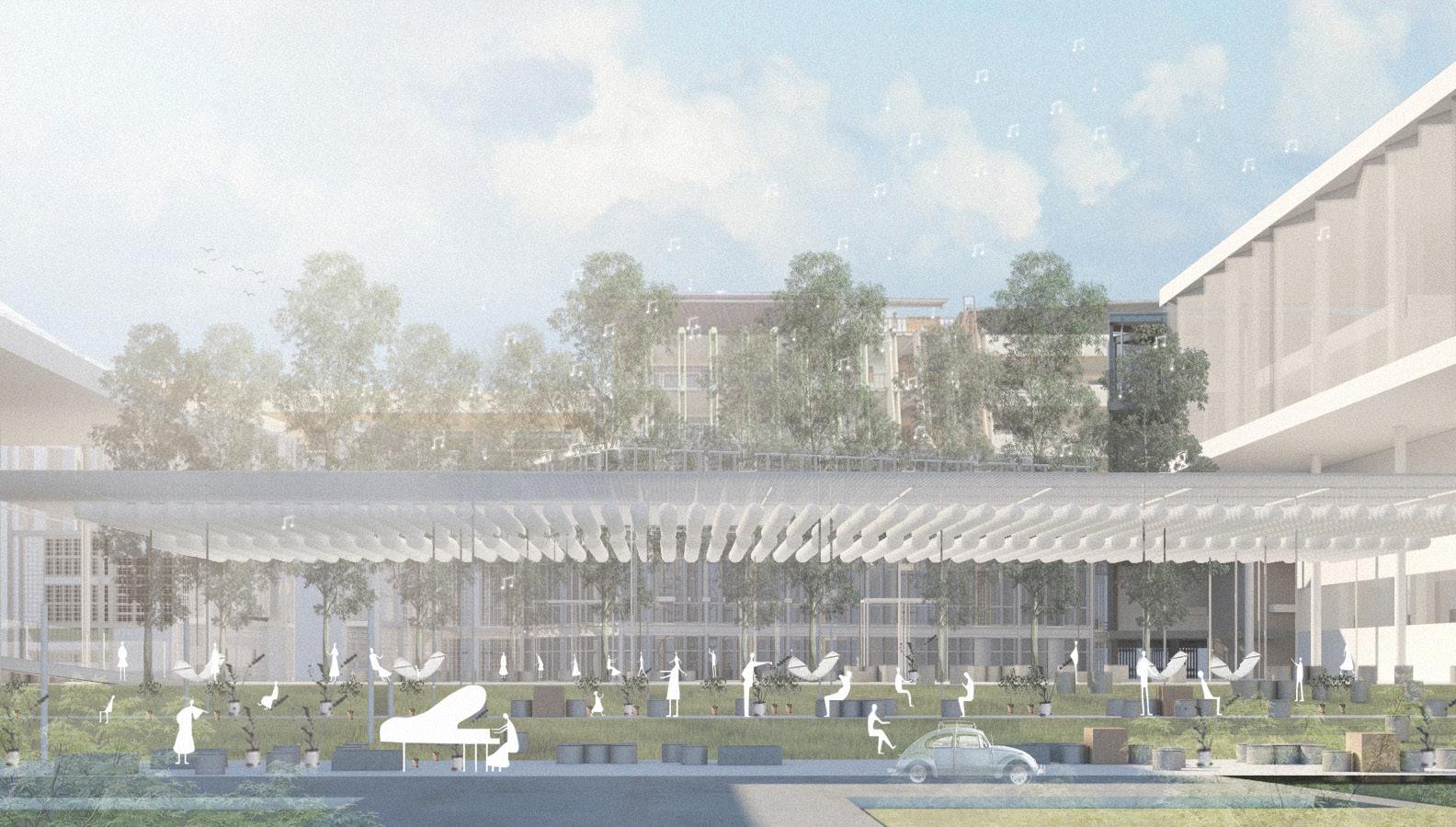







"archiving
memories, becoming the museum of paper cuture"


special thanks are given to
/Assistant Professor Korkiat Nimmol
/Associate Professor Pinraj Khanjanusthith, Ph.D.
/Associate Professor Piyalada Thaweeprungsiporn, Ph. D.
/Assistant Professor Waricha Wongphyat, Ph.D. for advises in crafting this thesis

and last but not least, thank you... /likaybindery /meung-thong printing house /witti.studio /tonpao paper crafts community /mr. vijitr srisanga /book clinic /the national library for the love of paper, and the true experiences of craftsmanship that lead paper into magical wonders

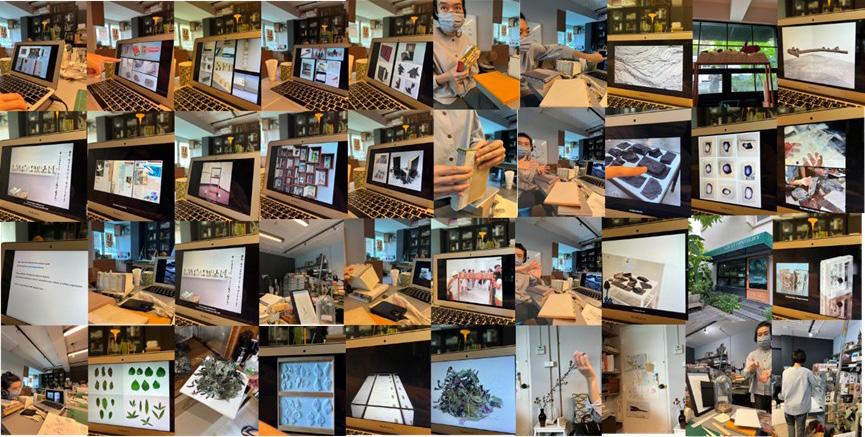
1
aj.kae (pantipa tunchookiat) for enacting the love of paper the people that have made it this far to the museum of paper culture
หากกระดาษ
